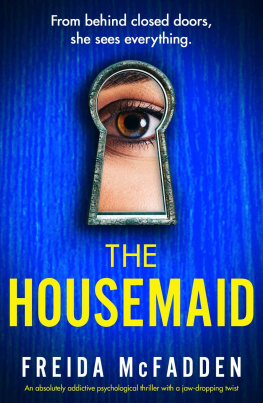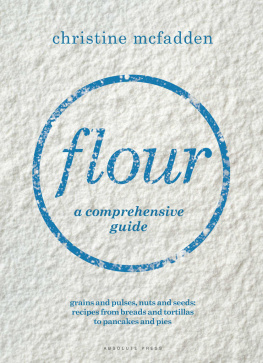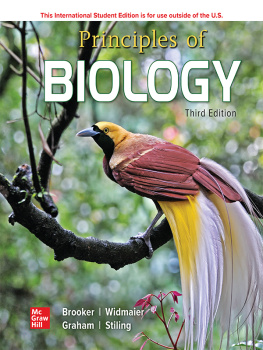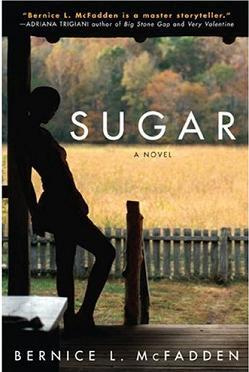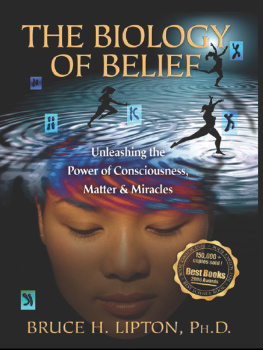McFadden Johnjoe - Life on the Edge: The Coming of Age of Quantum Biology
Here you can read online McFadden Johnjoe - Life on the Edge: The Coming of Age of Quantum Biology full text of the book (entire story) in english for free. Download pdf and epub, get meaning, cover and reviews about this ebook. year: 2015, publisher: Crown;Random House Inc, genre: Religion. Description of the work, (preface) as well as reviews are available. Best literature library LitArk.com created for fans of good reading and offers a wide selection of genres:
Romance novel
Science fiction
Adventure
Detective
Science
History
Home and family
Prose
Art
Politics
Computer
Non-fiction
Religion
Business
Children
Humor
Choose a favorite category and find really read worthwhile books. Enjoy immersion in the world of imagination, feel the emotions of the characters or learn something new for yourself, make an fascinating discovery.

- Book:Life on the Edge: The Coming of Age of Quantum Biology
- Author:
- Publisher:Crown;Random House Inc
- Genre:
- Year:2015
- Rating:4 / 5
- Favourites:Add to favourites
- Your mark:
- 80
- 1
- 2
- 3
- 4
- 5
Life on the Edge: The Coming of Age of Quantum Biology: summary, description and annotation
We offer to read an annotation, description, summary or preface (depends on what the author of the book "Life on the Edge: The Coming of Age of Quantum Biology" wrote himself). If you haven't found the necessary information about the book — write in the comments, we will try to find it.
Life on the Edge: The Coming of Age of Quantum Biology — read online for free the complete book (whole text) full work
Below is the text of the book, divided by pages. System saving the place of the last page read, allows you to conveniently read the book "Life on the Edge: The Coming of Age of Quantum Biology" online for free, without having to search again every time where you left off. Put a bookmark, and you can go to the page where you finished reading at any time.
Font size:
Interval:
Bookmark:
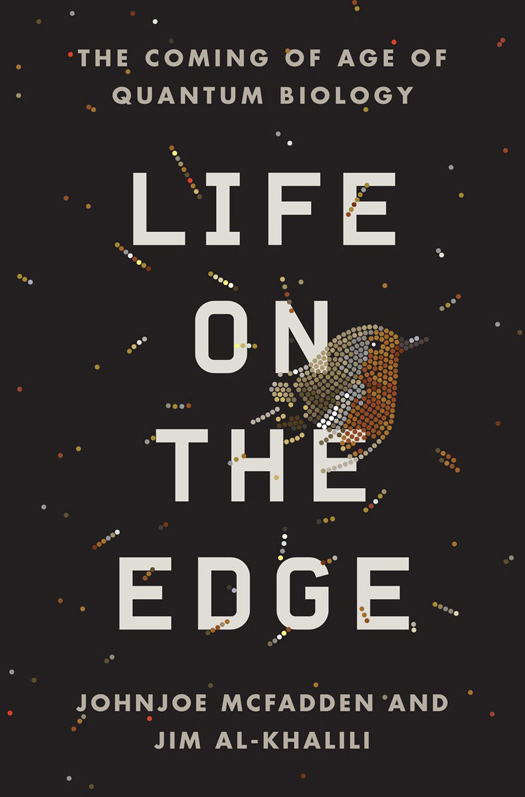
A LSO BY J OHNJOE M C F ADDEN
Quantum Evolution
Human Nature: Fact and Fiction
A LSO BY J IM A L -K HALILI
Black Holes, Wormholes and Time Machines
Nucleus: A Trip into the Heart of Matter
Paradox: The Nine Greatest Enigmas in Science
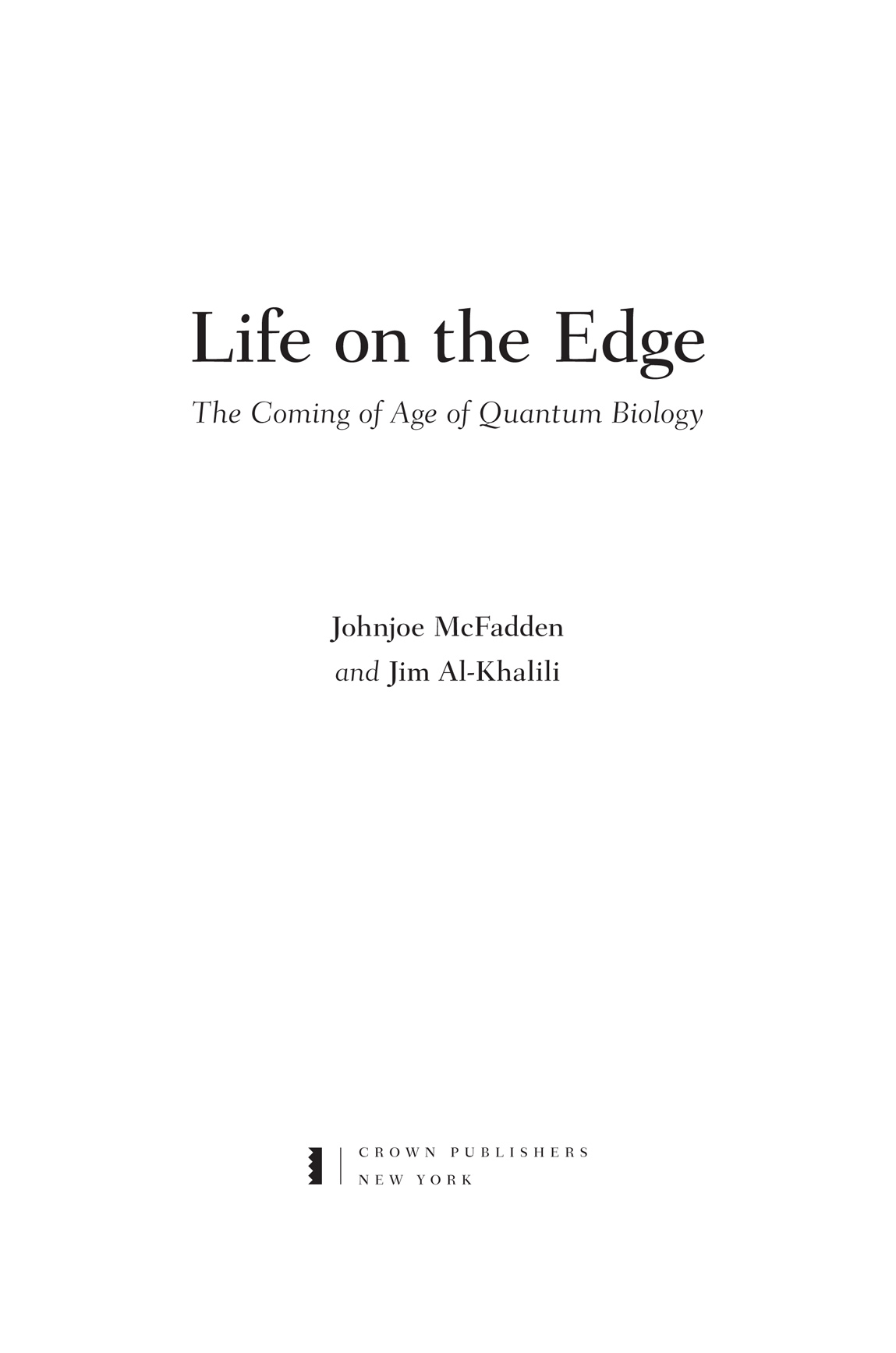

Copyright 2014 by Johnjoe McFadden and Jim Al-Khalili
All rights reserved.
Published in the United States by Crown Publishers, an imprint of the Crown Publishing Group,
a division of Penguin Random House LLC, New York.
www.crownpublishing.com
CROWN is a registered trademark and the Crown colophon is a trademark of Penguin Random House LLC.
Originally published in hardcover in Great Britain as Life on the Edge by Bantam Press, an imprint of Transworld Publishers, a division of Penguin Random House Ltd., in 2014.
Library of Congress Cataloging-in-Publication Data
McFadden, Johnjoe.
Life on the edge : the coming of age of quantum biology. Johnjoe McFadden andJim Al-Khalili.
pages cm
Includes bibliographical references and index.
ISBN 978-0-307-98681-8 (alk. paper)
1. Quantum biochemistry. 2. Biology. 3. Life cycles (Biology) I. Al-Khalili, Jim,
1962 II. Title.
QP517.Q34M34 2015
572.36dc23
2015018948
ISBN9780307986818
eBook ISBN9780307986832
Illustrations by HL Studios
Cover design by Na Kim
v3.1
For
Penny and Ollie
Julie, David and Kate
T HIS BOOK has been three years in the writing, although the authors have collaborated on research in this exciting new field, which brings quantum physics, biochemistry and biology together, for almost two decades. But when it comes to such a cross-disciplinary area of science as quantum biology, it is impossible ever to become expert enough to explain in sufficient depth and with sufficient confidence all the science that is needed to paint the full pictureparticularly when it comes to writing the first ever book on the subject for a lay audience.
It is certainly true that neither of the authors could have written this book alone, since we each bring our own expertise from the worlds of physics and biology, respectively, to the table. It is even truer that we would not have been able to produce a book that we are both immensely proud of without the help and advice of many people, most of whom are world leaders in their areas of research.
We are grateful to Paul Davies for many fruitful discussions he has had with both of us over the past fifteen years about quantum mechanics and its potential relevance in biology. We are also indebted to the many physicists, chemists and biologists now making great strides in this new field whose expertise and deep knowledge of their specialist areas we did not, and do not, have. In particular, we are indebted to Jennifer Brookes, Gregory Engel, Adam Godbeer, Seth Lloyd, Alexandra Olaya-Castro, Martin Plenio, Sandu Popescu, Thorsten Ritz, Gregory Scholes, Nigel Scrutton, Paul Stevenson, Luca Turin and Vlatko Vedral. We also wish to thank Mirela Dumic, the coordinator of the University of Surreys Institute of Advanced Studies, who almost single-handedly put together our highly successful international workshop, Quantum Biology: Current Status and Opportunities, at Surrey in 2012, which was jointly funded by the IAS, BBSRC (Biotechnology and Biological Sciences Research Council) and MILES (Models and Mathematics in Life and Social Sciences) project. This workshop brought together many of the leading figuresthis is still an emerging field and the number working in it is relatively smallcurrently involved in quantum biology research from around the world and helped us feel as though we were truly part of this exciting research community.
Once the book was in draft form, we asked several of those colleagues listed above to read through it and give us their opinions. We are thus especially grateful to Martin Plenio, Jennifer Brookes, Alexandra Olaya-Castro, Gregory Scholes, Nigel Scrutton and Luca Turin. We would also like to thank Philip Ball, Pete Downes and Greg Knowles for reading through some or all of the final draft and providing so many insightful and useful comments that have improved the book tremendously. A big thank-you goes to our agent, Patrick Walsh, without whom the book would not have got off the ground, and to Sally Gaminara at Random House, for her faith in us and for being so excited about the project. An even bigger thank-you has to go to Patrick and to Carrie Plitt at Conville & Walsh, for their advice and suggestions about the books structure and format, and in helping to mold it into a final version that is light years away from its initial clunky state. We are also indebted to Gillian Somerscales for her editorial brilliance.
Last, but by no means least, we wish to thank our families for their unstinting support, particularly during those periods when we were facing self- and publisher-imposed deadlines, which meant putting all other commitments to one side and shutting ourselves away with our laptops. We have lost count of the evenings, weekends and family vacations during which quantum biology has had to come first. We hope the book has been worth it.
For both for us, and for the new field of quantum biology, we hope that journey has only just begun.
Jim Al-Khalili and Johnjoe McFadden
August 2014
T HE WINTER frost has arrived early this year in Europe and there is a penetrating chill in the evening air. Buried deep within a young robins mind, a once vague sense of purpose and resolve grows stronger.
The bird has spent the past few weeks devouring far more than her normal intake of insects, spiders, worms and berries and is now almost double the weight that she was when her brood flew the nest back in August. This extra bulk is mostly fat reserves, which she will require as fuel for the arduous journey upon which she is about to embark.
This will be her first migration away from the spruce forest in central Sweden where she has lived for the duration of her short life and where she reared her young chicks just a few months ago. Luckily for her, the previous winter was not too harsh, for a year ago she was not yet fully grown and therefore not strong enough to undertake such a long journey. But now, with her parental responsibilities discharged until next spring, she has only herself to think about, and she is ready to escape the coming winter by heading south to seek a warmer climate.
It is a couple of hours after sunset. Rather than settle for the night, she hops in the gathering gloom to the tip of a branch near the base of the huge tree that she has made her home since the spring. She gives herself a quick shake, much like a marathon runner loosening up her muscles before a race. Her orange breast glistens in the moonlight. The painstaking effort and care she invested in building her nestjust a few feet away, partially hidden against the moss-covered bark of the tree trunkis now a dim memory.
She is not the only bird preparing to depart, for other robinsboth male and femalehave also decided that this is the right night to begin their long migration south. In the trees all around her she hears loud, shrill singing that drowns out the usual sounds of other nocturnal woodland creatures. It is as though the birds feel compelled to announce their departure, sending out a message to the other forest inhabitants that they should think twice before contemplating invading the birds territory and empty nests while they are gone. For these robins most certainly plan to be back in the spring.
Font size:
Interval:
Bookmark:
Similar books «Life on the Edge: The Coming of Age of Quantum Biology»
Look at similar books to Life on the Edge: The Coming of Age of Quantum Biology. We have selected literature similar in name and meaning in the hope of providing readers with more options to find new, interesting, not yet read works.
Discussion, reviews of the book Life on the Edge: The Coming of Age of Quantum Biology and just readers' own opinions. Leave your comments, write what you think about the work, its meaning or the main characters. Specify what exactly you liked and what you didn't like, and why you think so.


